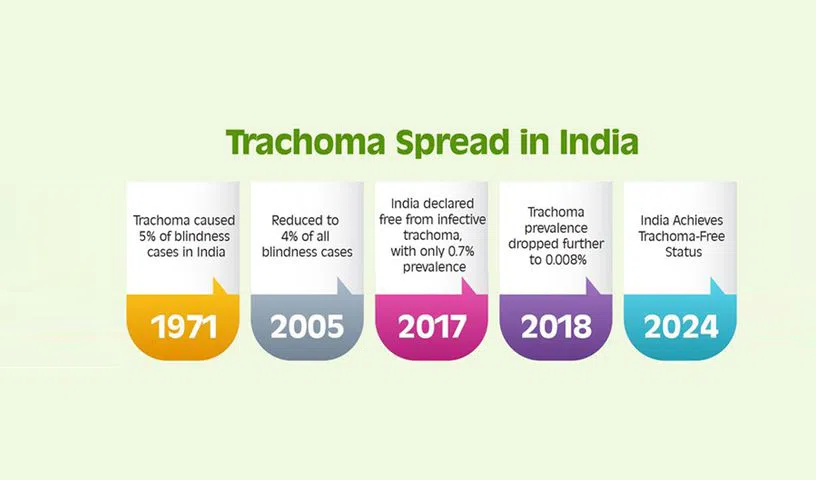
Once the leading cause of blindness in the 1950s and 1960s, trachoma has now been officially eliminated from India, according to a recent declaration by the World Health Organization (WHO). The Ministry acknowledged this achievement, highlighting the government’s persistent efforts to safeguard the vision of millions and the significance of promoting healthy eyesight for all.
New Delhi: Strong public health and community support has helped India to be free from trachoma — a highly contagious bacterial infection that has been a major cause of preventable blindness worldwide, said the Ministry of Health and Family Welfare on Sunday.
From being the leading cause of blindness during the 1950s and 1960s, the World Health Organization (WHO) last week declared India “officially free from trachoma”.
“This milestone comes after years of dedicated efforts by the government to protect the vision of millions, emphasising the importance of healthy eyesight for every individual,” the ministry said.
According to the WHO, an estimated 150 million people worldwide are affected by trachoma and 6 million of them are blind or at risk of visually disabling complications.
What is Trachoma?
Trachoma is a neglected tropical disease that is caused by infection by the Chlamydia trachomatis bacterium. The disease is transmittable, via close physical contact; sharing personal belongings, like towels, and pillows; and coughing and sneezing.
It is a very painful disease that causes blurry vision, red and swollen eyes, pain while blinking or sleeping, and vision loss. If left untreated, the disease can lead to irreversible blindness.
Poor hygiene practices, overcrowded living conditions, water scarcity, and inadequate latrines and sanitation facilities promote the transmission of trachoma. Further, the ministry noted that children are more vulnerable to trachoma:
How India achieved victory over trachoma
Trachoma was a significant public health concern in India during the 1950s and 1960s, affecting over 50 per cent of the populations in Gujarat, Rajasthan, Punjab, Haryana, Uttar Pradesh, and the Nicobar Islands.
By 1971, trachoma was responsible for 5 per cent of all blindness cases in the country.
To curb the pressing issue, India implemented a series of measures under the National Programme for Control of Blindness and Visual Impairment (NPCBVI).
India also adopted the WHO-recommended SAFE strategy — surgery for trichiasis, antibiotics to clear infection, and facial cleanliness and environmental improvement to reduce transmission.
In 1963, the government launched the National Trachoma Control Programme that focused on surgical treatment; antibiotic distribution; facial cleanliness to promote hygiene and reduce transmission; and enhancing access to water and sanitation.
In 1976, trachoma was integrated into national programmes.
The efforts brought significant results, with trachoma accounting for 4 per cent of all blindness cases in India and just 0.008 per cent by 2018, the ministry said.
“Through these continuous efforts, India has made significant strides toward eradicating trachoma. By 2017, India was declared free from infectious trachoma,” the ministry said.
The National Trachoma Survey Report (2014-17) indicated that active trachoma infections had been eliminated among children in all surveyed districts, with an overall prevalence of only 0.7 per cent — well below the WHO’s elimination threshold of 5 per cent.
Despite this remarkable progress, India continued “vigilant surveillance for trachoma cases” from 2019 to 2024 to check for any resurgence of the disease.
Meanwhile, the WHO also applauded India’s effective measures against trachoma.
WHO Director-General Dr. Tedros Adhanom Ghebreyesus praised India’s commitment to alleviating the suffering caused by trachoma, emphasising the vital collaboration among the government, healthcare professionals, and international partners that made this milestone possible.
While the disease continues to be a challenge in 39 other nations, India is among Nepal, Myanmar, and 19 other countries that have successfully eliminated trachoma as a public health issue.







